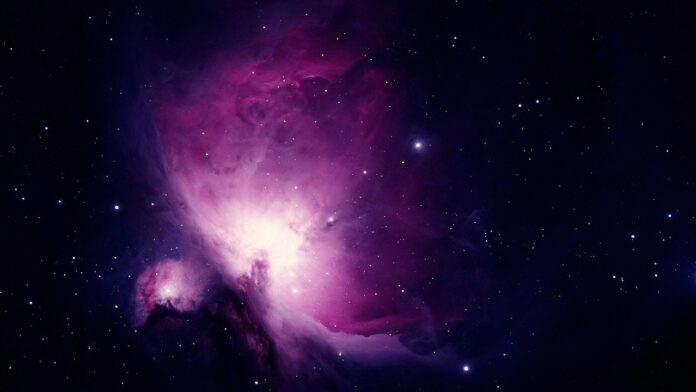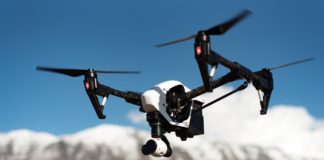Astronomers’ toolkits would be incomplete without machine learning.
A large telescope is what most people associate with becoming an astronomer; however, this isn’t always the case. However, this is outdated since digital cameras have eliminated the need to gaze through a scope.
Astronomy has seen a dramatic shift in recent years. Artificial intelligence has become the primary research tool for astronomers and cosmologists as more powerful computers, and sky surveys create unprecedented amounts of data. Nevertheless, where does all this information come from? How may computers aid our understanding of the universe?
AI’s voracious thirst for information:
Artificial intelligence,” “machine learning,” and other similar phrases have been bandied about a lot recently, and while they’re commonly used interchangeably, they relate to distinct concepts. Computational activity that replicates the way people think and complete tasks is referred to as artificial intelligence (AI). An example of machine learning (ML) is a family of technologies that learn to make predictions and judgments using enormous amounts of historical data. For the most part, models trained using ML learn from the data they are fed rather than having their behavior pre-programmed.
The capacity of digital assistants like Siri and Alexa to interpret speech, face recognition in smartphones, and spam filters in emails, are all instances of how machine learning is being employed in the real world. Astronomers are already using several of these tools to study the mysteries of time and space. Astronomy and machine learning go hand in hand because astronomers have an overabundance of data, which ML models also want.
It is no secret that MBs, GBs, and Tbs have been around for quite some time in astronomy. We’re interested in petabytes these days (PB). A petabyte is about one thousand terabytes, a million gigabytes, or a billion MB. Every feature-length film created in 4K quality would require roughly 10 PB of storage space, and it would take more than a century to see them all.
Astronomers can study the night sky in unprecedented detail thanks to an observatory built in Chile, Vera C. Rubin Observatory. More than 60 petabytes of raw data will be generated by Vera Rubin throughout her 10-year survey, which will cover everything from asteroids in our solar system to faraway galaxies. Astronomers worldwide are scrambling to develop new methods of using artificial intelligence (AI) to analyze all that data—and that’s just one of the next-generation observatories being built.
Astronomers:
The search for exoplanets is one field of astronomy where artificial intelligence has had a significant influence. With current technology, the best strategy for finding these signals is to look at how a star’s brightness changes over time. Observing a star’s light curve is a good indicator of whether or not there is a planet transiting in front of the star. When an exoplanet’s gravity works as a lens and magnifies a more distant star along its line of sight, this process is known as gravitational microlensing. By analyzing millions of light curves, like those recorded by NASA’s Kepler and TESS satellite observatories, we may detect the dilutions and spikes (Transiting Exoplanet Survey Satellite).
When it comes to the hunt for exoplanets, astronomers have developed ML-based models that can outperform humans in comparison to the extensive libraries of observed light curves. Aside from finding exoplanets, artificial intelligence (AI) can also provide astronomers with fresh insights into the workings of existing methods.
Artificial Intelligence (AI) algorithms have enabled researchers to uncover an elegant explanation of exoplanet microlensing, which unifies numerous views on how the exoplanet’s arrangement with its host star could fluctuate. Researchers at DeepMind recently reported in Nature on new AI-aided essential mathematical findings.
To detect habitable planets shortly, astronomers seek to use machine learning. Astronomers want to employ ML to see water, ice, and snow on rocky planets using next-generation telescopes like the Nancy Grace Roman Telescope and James Webb Space Telescope (JWST).
Galactic Forgeries:
In contrast to many ML models, which are taught to discriminate between different data types, some are designed to generate new data. In this subset of AI approaches, generative models are used to produce artificial data products like pictures based on some comprehension of the data they were trained on.
Research business OpenAI and the free DALL-E mini clone have brought this idea to the public’s attention with their DALL-E models. Models that can create pictures of Garfield put into episodes of Seinfeld have set the internet on fire with their incredible ability to do so.
Astronomers have always been skeptical of faking data, but in recent years they’ve been turning to computer simulations known as generative models to construct false galaxies. An article in Monthly Notices of the Royal Astronomical Society on January 28 explains how the technology may be used to make detailed views of false galaxies that can be used to evaluate predictions from massive simulations of the universe. Next-generation surveys’ data processing pipelines can benefit from their input as well.
Even skilled astronomers have difficulty distinguishing between the real and the phony in some of these algorithms. The Astronomy Picture of the Day webpage recently posted a picture with a single actual photograph among its thousands of artificially made photos of celestial objects.
The Pursuit of Serendipity:
AI has the potential to make discoveries that no one could have predicted before. Astronomical discoveries have a long history of occurring due to a chance encounter. William Herschel discovered Uranus by coincidence while searching the night sky for dim stars. Vesto Slipher found the expanding cosmos by measuring the speed of spiral arms in what he thought were protoplanetary discs, and Jocelyn Bell Burnell discovered pulsars while reviewing quasar data.
Anomaly detection techniques may soon allow an AI to join the ranks of lucky discoverers. These algorithms comb through mountains of pictures, light curves, and spectra to find samples that have never been seen before. Observatories like Rubin and JWST generate petabytes of raw data, and we have no idea what these new algorithms will discover.
Originally reported by https://astronomy.com/news/2022/07/how-artificial-intelligence-is-changing-astronomy














